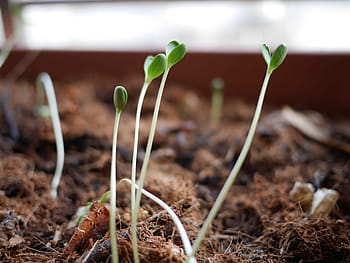Ultimate Guide to Garden Soil Preparation for Thriving Plants

Ultimate Guide to Garden Soil Preparation for Thriving Plants
Garden Soil Preparation for Optimal Growth: A Comprehensive Guide
Are you tired of lackluster plants and underwhelming harvests? The secret to a thriving garden might be right beneath your feet – your soil. In this ultimate guide, we'll delve into the world of garden soil preparation, covering everything from soil fertility to plant nutrients.
Understanding Soil Fertility
Soil fertility is the ability of soil to sustain plant growth. It's determined by the physical, chemical, and biological properties of the soil. A fertile soil is teeming with life, from microscopic organisms to larger creatures like earthworms.
The Role of Plant Nutrients
Plants need a balanced diet of nutrients to grow and thrive. The primary nutrients are nitrogen, phosphorus, and potassium. Secondary nutrients include calcium, magnesium, and sulfur. Trace elements, like iron and zinc, are also crucial.
Composting: Nature's Miracle Worker
Composting is a natural process that transforms organic waste into nutrient-rich soil amendment. It improves soil structure, promotes water retention, and provides a slow-release source of nutrients for your plants.
Soil Texture: The Foundation of Healthy Soil
Soil texture refers to the proportion of sand, silt, and clay particles in your soil. The ideal soil texture, often referred to as loamy soil, allows for good water drainage, aeration, and nutrient retention.
The Benefits of Raised Beds
Raised beds offer numerous advantages, including improved soil drainage, increased soil warmth, and easier access for gardeners. They also allow you to control the soil quality, making it easier to achieve optimal soil conditions.
For more information on soil texture and its importance, check out this resource from the Royal Horticultural Society.
Preparing Your Soil for Planting
Soil preparation involves several steps, including testing your soil, adding amendments, and tilling. Regular testing can help you monitor your soil's pH and nutrient levels, allowing you to make necessary adjustments.
Maintaining Soil Health
Soil health isn't a one-time task. It requires ongoing care and maintenance. Practices like crop rotation, cover cropping, and mulching can help maintain soil fertility and prevent nutrient depletion.
Conclusion
Garden soil preparation is a vital step towards achieving optimal plant growth. By understanding soil fertility, plant nutrients, and the importance of practices like composting and raised beds, you can create a thriving garden ecosystem.
FAQs
-
What is the best time to prepare my garden soil?
- The best time to prepare your garden soil is in the fall or early spring, before planting.
-
How often should I test my soil?
- It's recommended to test your soil every 2-3 years to monitor its pH and nutrient levels.
-
Can I use kitchen scraps for composting?
- Yes, many kitchen scraps like fruit and vegetable peels, coffee grounds, and eggshells can be composted.
-
What is the ideal pH for most garden plants?
- The ideal pH for most garden plants is between 6.0 and 7.0.
-
How deep should I till my soil?
- Till your soil to a depth of 6-8 inches to promote root growth and improve soil structure.
0 Response to " Ultimate Guide to Garden Soil Preparation for Thriving Plants"
Post a Comment